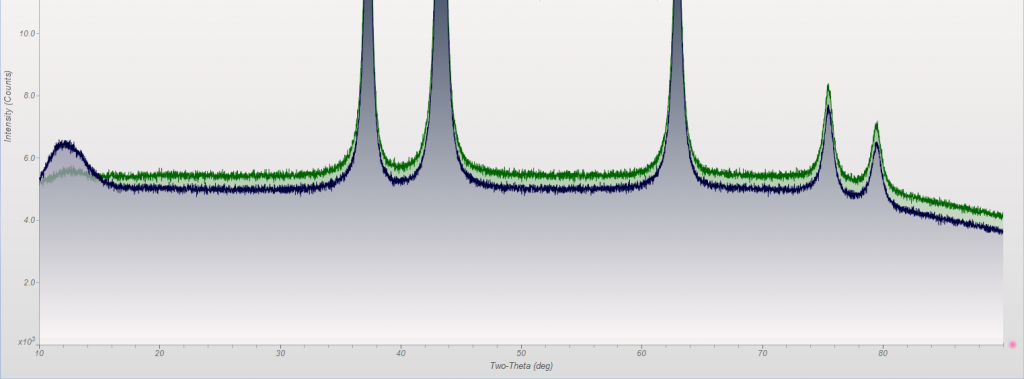

The glass sample shows the expected scatter “hump” starting at a very low angle and it doesn’t flatten until nearly 100☂Θ. This is why we use a pure Graphite sample to characterize the emission spectra of our XRF instrumentation.

That is to say, the lighter the matrix, the more efficiently it will scatter X-rays. X-ray scattering off a surface is inversely proportional to the average atomic number of that material. The issue with amorphous glass is not diffracted peaks in the background, but rather, scatter off the surface. While there are serious caveats here, it may be a reasonable solution for some users. Some users report acceptable results using simple glass plates. ZBH-32 sample holders mounted for Siemens and Bruker single sample stages. The scan below shows the data collected from a single mg of Silicon 640B standard powder spread across a ZBH. These fit most Siemens XRD systems and can be customized for use in most any other system. We’re able to offer a direct replacement for these with our new ZBH-32 holders.

Most our users at KS Analytical Systems run the original Siemens/Bruker plates, but others are using Si(100) and even glass substrates. The answer is a zero background sample holder (ZBH). Or diffracted background from whatever the powder is placed on. Placing these in a standard holder would leave them well outside the plane of diffraction and provide terrible data, not to mention substantial scatter Some are too large or oddly shaped which calls for a special holding solution like those listed here, but many are simply very small quantities of powder. The majority of the samples we receive come in volumes high enough to completely fill the well in any of our standard sample holders.


 0 kommentar(er)
0 kommentar(er)
